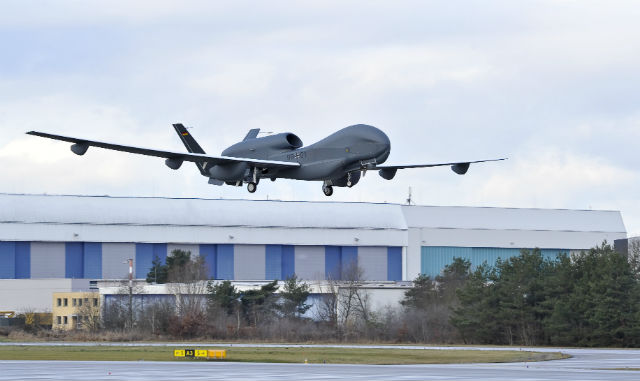Germany's developmental Euro Hawk unmanned reconnaissance aircraft has completed its first flight carrying a Cassidian-developed suite of signals intelligence (SIGINT) sensors, kicking off a test programme that is expected to total around 15 sorties.
Achieved on 11 January using a derivative of the Northrop Grumman RQ-4 Global Hawk, the milestone event came several months later than scheduled, due to a longer-than-expected process to secure the required certification approvals from Germany's airworthiness authorities.
After taking off from Manching near Munich, the unmanned air vehicle climbed to an altitude of 50,000ft (15,200m), and remained within military-controlled airspace throughout its more than 6h sortie.
 |
|---|
Northrop Grumman |
"With this first sensor flight, the Euro Hawk effectively demonstrated its system capability for safe operation within German airspace," says Neset Tukenmez, chief executive of the Northrop/EADS joint venture company responsible for delivering the programme. Its SIGINT payload also "showed excellent performance", adds Cassidian chief executive Bernhard Gerwert.
Getting the Euro Hawk back into the air has been a lengthy process since the development aircraft's arrival in Manching from the USA in July 2011. Payload integration activities were completed by February 2012, with the platform having undergone first taxi trials in June. Speaking at last September's ILA Berlin air show, industry officials referred to a "painfully detailed approach" to securing the airworthiness approvals required, but outlined an ambition to fly the aircraft late last year.A test campaign of about 15 flights is expected to be performed from Manching before the Euro Hawk will be delivered to the German air force's Schleswig-Jagel air base for additional user trials.
Berlin's Euro Hawk programme could eventually comprise the delivery of four series production aircraft and a second ground control station for the type, under a deal worth a projected €1.2 billion ($1.6 billion).
Source: Flight International
















